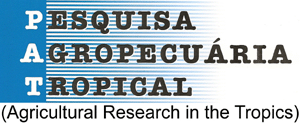ABSTRACT
The control of soil acidity through liming and the adoption of adequate management are essential to the maintenance of pastures productivity. The morphogenetic and structural characteristics of Urochloa decumbens cv. Basilisk, in canopies with (0.7 t ha-1 and 1.0 t ha-1) or without liming and subjected to severe or lenient cuttings (stubble corresponding to 40 % or 60 % of the pre-harvest height, respectively), were evaluated throughout regrowth, during late spring and summer. Treatments were distributed in a 3 x 2 factorial arrangement, in a completely randomized block design, with 3 replications (80 m2 plots). Increased liming rates do not result in benefits to the herbage mass, tiller population density or a faster canopy recovering. The average tiller weight decreases, while the duration of regrowth linearly increases, with increasing liming rates, particularly in late spring. Stem elongation and leaf senescence rates increase and leaf elongation rates decrease from the 15th day of regrowth, regardless of the liming rates or defoliation severities. Post-harvest heights ranging from 40 % to 60 % of the pre-harvest height showed to be within the tolerance limits to defoliation of U. decumbens. The liming rates adopted had only marginal impacts on the morphogenetic characteristics of U. decumbens.
KEYWORDS:
Urochloa decumbens cv. Basilisk; stem elongation; regrowth dynamics; light interception





